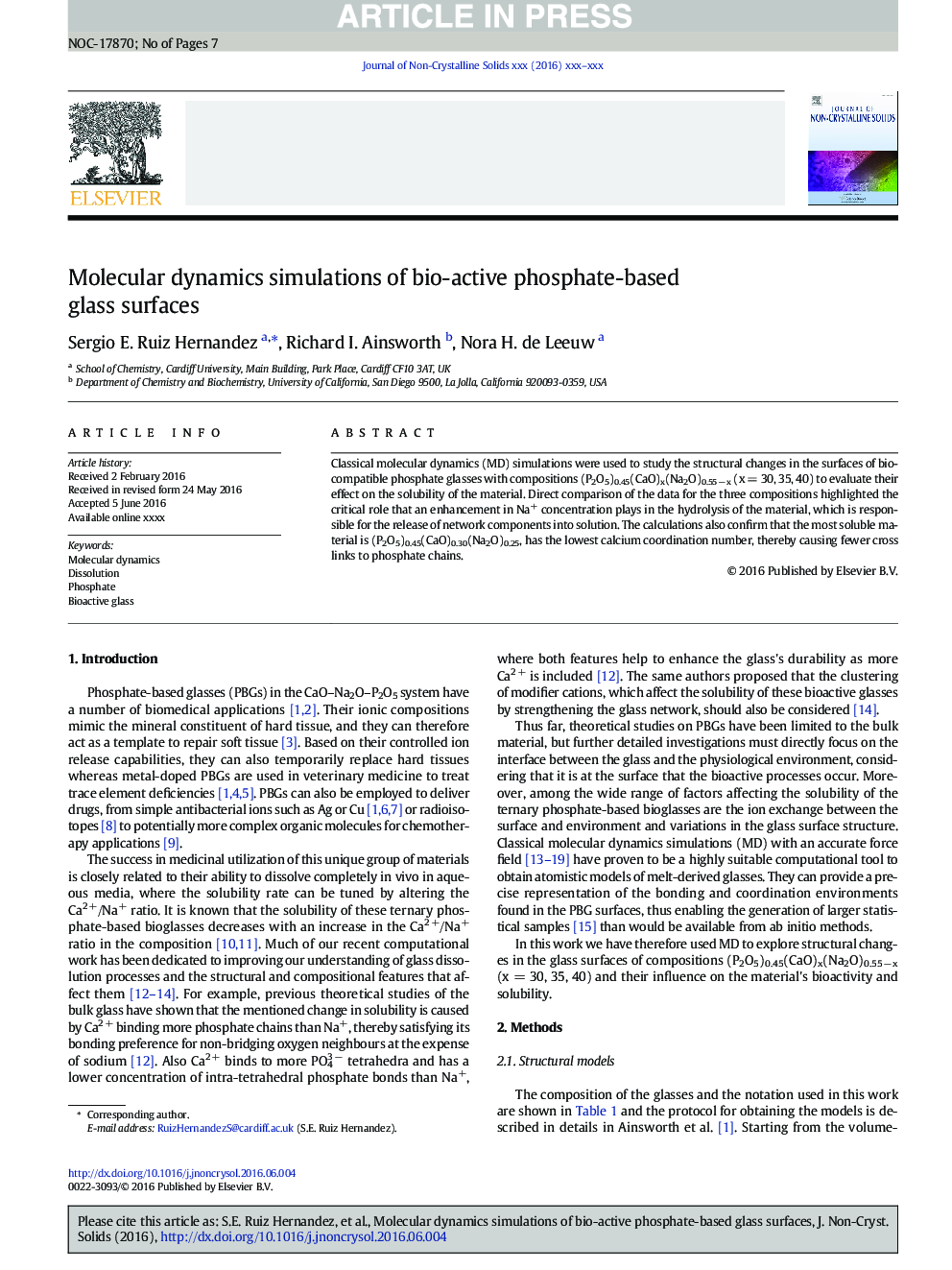| Article ID | Journal | Published Year | Pages | File Type |
|---|---|---|---|---|
| 5441471 | Journal of Non-Crystalline Solids | 2016 | 7 Pages |
Abstract
Classical molecular dynamics (MD) simulations were used to study the structural changes in the surfaces of biocompatible phosphate glasses with compositions (P2O5)0.45(CaO)x(Na2O)0.55 â x (x = 30, 35, 40) to evaluate their effect on the solubility of the material. Direct comparison of the data for the three compositions highlighted the critical role that an enhancement in Na+ concentration plays in the hydrolysis of the material, which is responsible for the release of network components into solution. The calculations also confirm that the most soluble material is (P2O5)0.45(CaO)0.30(Na2O)0.25, has the lowest calcium coordination number, thereby causing fewer cross links to phosphate chains.
Related Topics
Physical Sciences and Engineering
Materials Science
Ceramics and Composites
Authors
Sergio E. Ruiz Hernandez, Richard I. Ainsworth, Nora H. de Leeuw,
